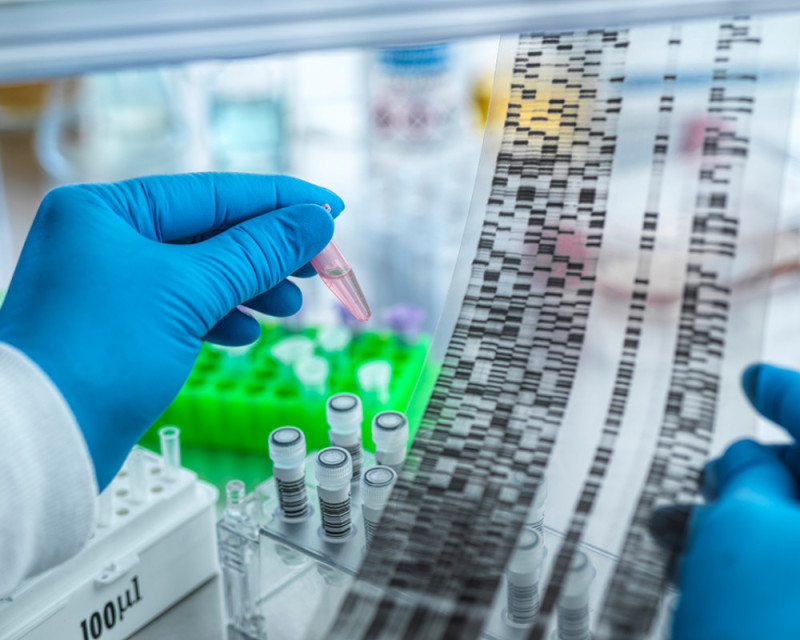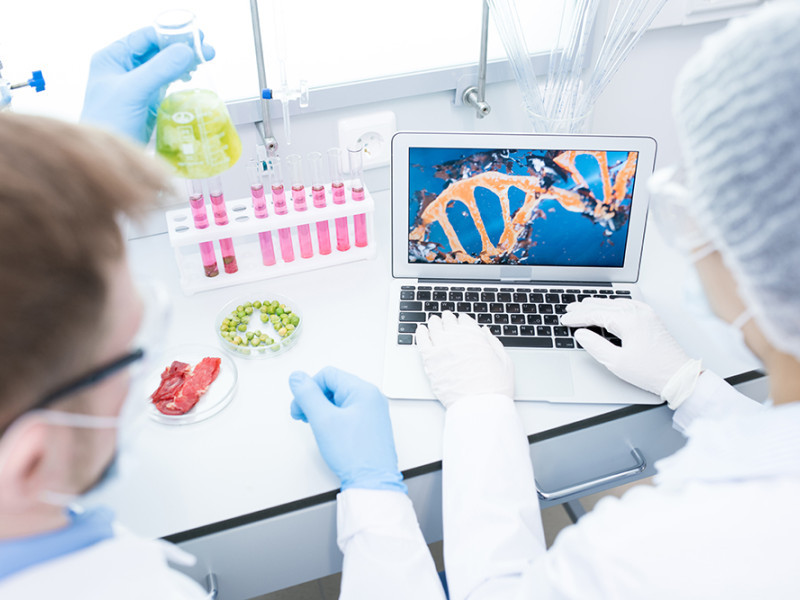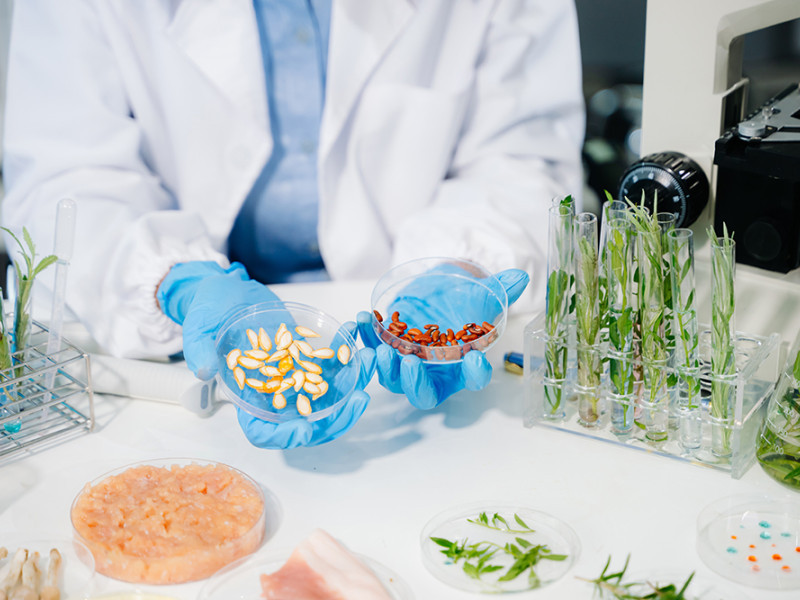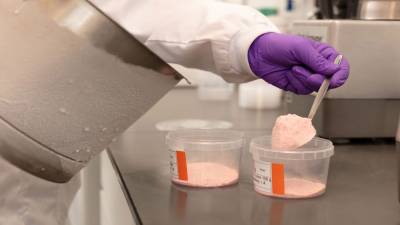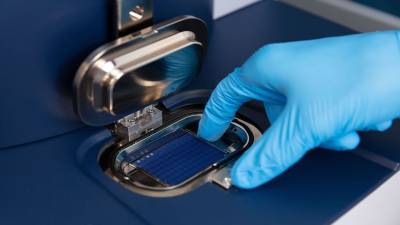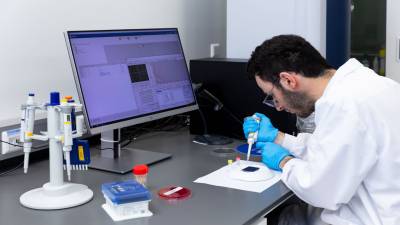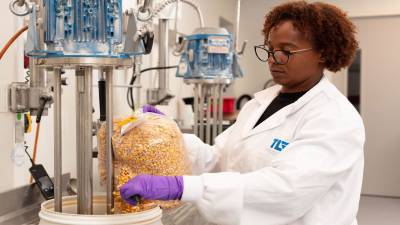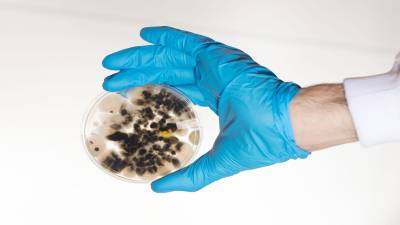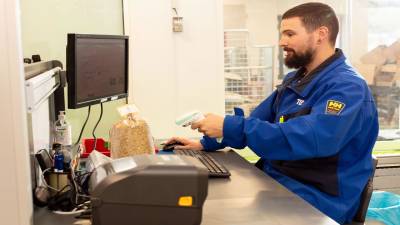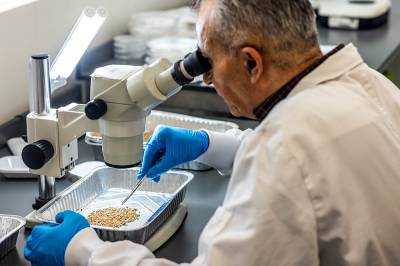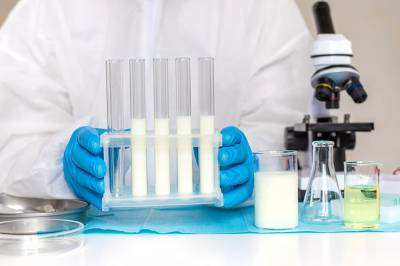DNA Analysis in the Food Industry
Verification, allergen control and microbiological identification within quality assurance.
Role of DNA analysis in QA systems
DNA-based analytical techniques provide a species-specific method for identification and verification within food safety systems. These techniques are valuable when visual inspection or chemical analysis is insufficient - for example, in highly processed products, trace analysis or cross-contamination cases where classical methods fall below detection limits.
TLR performs DNA analyses under ISO/IEC 17025 accreditation (RvA L059). Results are applicable within frameworks such as:
- BRCGS Food Safety - sections 5.3 and 5.4
- FSSC 22000 - category I (operational PRPs)
- IFS Food - supplier verification and traceability
Applications for the food industry
1. Ingredient species verification
- Objective determination of botanical or animal origin in composite products
- Useful in cases of product fraud, recipe verification or authenticity claims such as "soy-free"
- Example: DNA comparison to distinguish between almond and apricot kernels
2. Allergen detection via DNA
- PCR detects allergen-specific DNA even without intact protein present
- Applicable in cleaning validation, product changeovers or complaint investigations
- Matrices: celery, hazelnut, soy, lupin, peanut
Note: DNA detection does not automatically indicate clinically relevant levels of allergenic protein. Interpretation should include a risk assessment within the food safety plan context.
3. Microbiological identification
- DNA typing of culture isolates during hygiene monitoring
- Relevant examples:
- Aspergillus flavus (aflatoxin production)
- Penicillium verrucosum (ochratoxin production)
- Yeast identification in sauces, juices or dairy
4. End product analysis
- Detection of thermostable DNA in heated or emulsified products
- Applicable to snacks, cooked meats, ready-to-eat meals or spice blends
- Alternative when protein-based or microbiological methods fail
Techniques and detection limits
| Method | Application | Typical detection limit |
| PCR | Presence/absence screening | 1-10 copies per reaction |
| qPCR | DNA quantification | 10¹-10³ copies per sample |
| Sequencing | Species or strain identification | n/a - sequence comparison |
For allergens: detection below 0.1 ppm is possible if DNA is intact. Matrix composition and extraction efficiency influence the actual detection limit.
Certification applications
- BRCGS Food Safety
- Section 5.3: verification of cleaning/allergen management
- Section 5.4: ingredient authenticity
- FSSC 22000
- Risk assessment at goods-in control (e.g. spices)
- Operational PRPs for cross-contamination prevention
- IFS Food
- Identification in root cause analysis and supplier assessment
Recommendation: DNA analysis is effective as a verification tool within HACCP-based control measures, for example when validating an allergen-free production line.
Accreditation and reporting
- All tests performed under ISO/IEC 17025 (RvA L059)
- Reports include:
- Positive and negative controls
- Measurement uncertainty and interpretation advice
- Available in Dutch and English
Documentation can be used for internal audits, recalls, product specifications and export certification.
Conclusion
DNA analysis supports the food industry in traceability, risk assessment and regulatory compliance. From species verification to allergen detection and microbiological identification, it offers laboratory certainty where classical methods may fail. Through accreditation and alignment with relevant standards, DNA analysis strengthens quality assurance across the supply chain.
Meld je aan voor de laatste tips en adviezen dat je gelijk in de praktijk kunt brengen.

